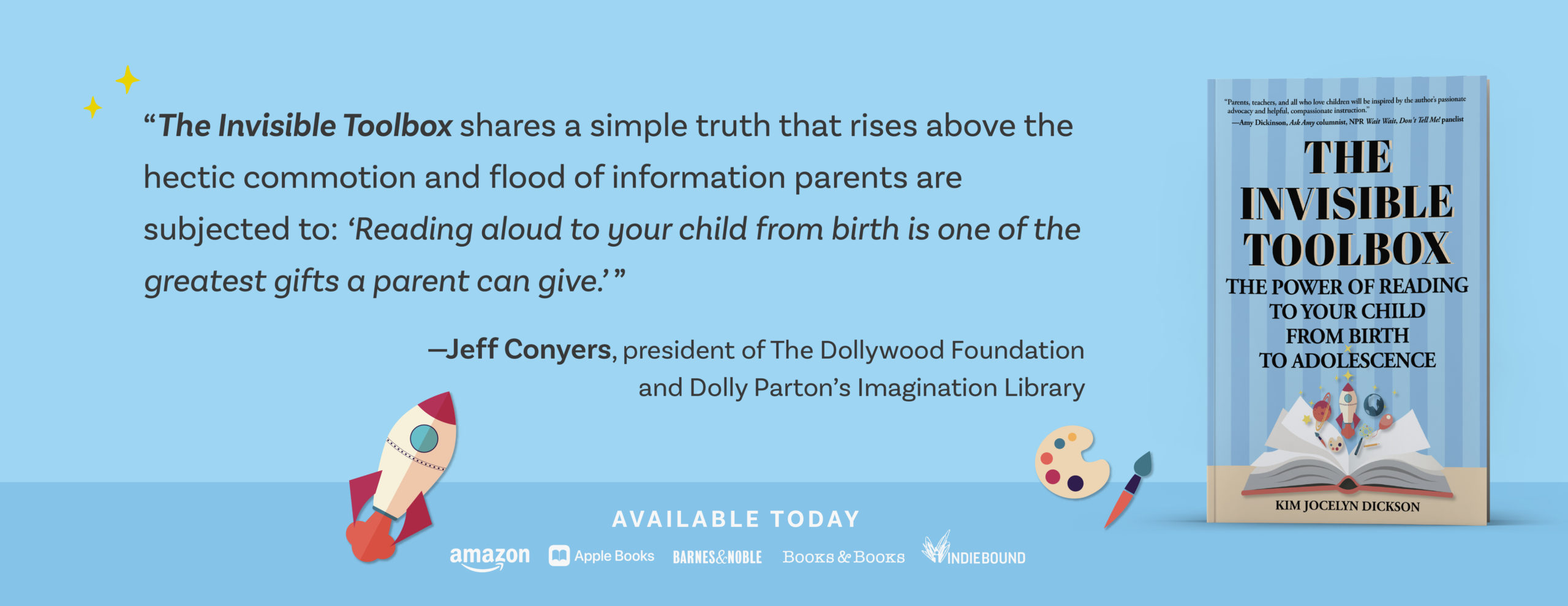The Power of Reading to Your Child from Birth to Adolescence
What if a longtime classroom teacher were able to share with the brand-new parents of her potentially future students the single most important thing they can do to foster their parent-child bond and their child’s future learning potential? THE INVISIBLE TOOLBOX: The Power of Reading to Your Child from Birth to Adolescence is Kim Jocelyn Dickson’s answer to that question. Nearly thirty years teaching hundreds of elementary school-aged children has convinced her that the simple act of reading aloud from birth has a far-reaching impact on our children, as well as the culture at large, that few of us fully understand and that our recent, nearly universal saturation in technology has further clouded its importance.
What Every Parent Needs to Know
THE INVISIBLE TOOLBOX is the concise, accessible gift book that belongs in the hands of every new and expectant parent. In it, Kim explains that every child begins kindergarten with a lunchbox in one hand and an Invisible Toolbox in the other. Some children arrive with empty toolboxes and some arrive with toolboxes overflowing. For those with full toolboxes, the future is brighter; these children are much more likely to thrive in school and beyond. Children who enter school with empty toolboxes are destined to struggle. Their shortfall will be a herculean challenge to bridge, negatively affecting their motivation and ability to learn. According to The Children’s Reading Foundation, 75% of children who begin school behind never catch up.
Priceless Tools for Kids and Parents
In THE INVISIBLE TOOLBOX, parents will learn about the ten priceless tools that will fill their child’s toolbox when they read aloud to their child from birth; and they’ll also learn about the tools they can give themselves to foster these gifts in their children. Practical tips for how and what to read aloud to children through their developmental stages, along with Do’s and Don’ts and recommended resources, round out all the practical tools a parent will need to prepare their child for kindergarten and beyond.
Research and Experience-Based
With THE INVISIBLE TOOLBOX, Kim has done her homework, weaving her practical anecdotal experience as an educator and parent into the hard research of recent findings in neuroscience. She not only reminds us that the first years of life are critical in the formation and receptivity of the primary predictor of success in school—language skills—and that infants begin learning immediately at birth, or even before, but also teaches and inspires us to build our own toolboxes so that we can help our children build theirs.
The Invisible Toolbox: The Power of Reading to Your Child from Birth to Adolescence is due out April 2020 from Mango Media.


